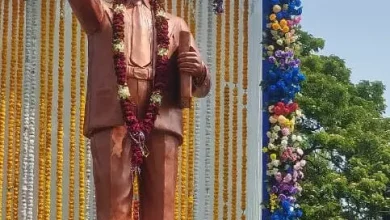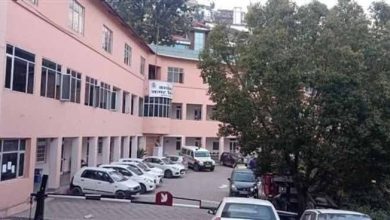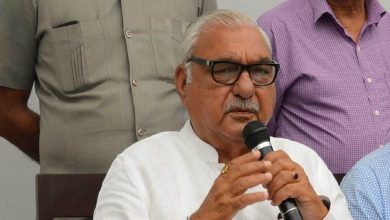Tamil Nadu: Traditional ‘Jamakkalam’ weavers stare at uncertainty

Coimbatore: Seventy-nine-year-old Durai Raj is among the last generation of weavers struggling to keep the art of making silk border ‘jammakkalam’ alive. There are probably only about 13 weavers in Bhavani taluk who are still making these varieties of ‘jammakkalam’, famous for their intricate designs woven from artificial silk. From over 100 skilled artisans a decade ago, the number of people like us in this dying art has reduced drastically,” said Durai Raj, a traditional weaver from Bhavani. He has been weaving since the age of 15. “Designs of the customer’s choice can be handwoven into the ‘jammakkalam’, giving them a better look. In my old days, I used to weave intricate designs and even human faces, but these days I have restricted myself to simple designs. Even my two sons and daughter have started doing other jobs due to the low pay in our traditional profession. It is indeed a dying art,” he added. Durai Raj, who once owned four handlooms, sold them off long ago and is now working as a daily wage labourer at another handloom unit. Like him, many others are among the last generation of artisan weavers who are toiling hard carrying on the tradition even after their retirement age.
Still, the low wages are forcing weavers to turn to alternative occupations. They say it is difficult to survive on such low wages amid rising costs. Another silk ‘jamakkalam’ weaver said, “Skilled silk weavers get wages of around Rs 400 per day, while regular ‘jamakkalam’ weavers get only around Rs 300 per day. Weaving ‘jamakkalam’ with silk border is more time consuming and labour intensive than regular weaving. Though there is a high demand for such blankets, the youth are turning to other occupations due to low wages.” With the youth being reluctant to follow their family’s weaving tradition due to low wages, only a handful of elderly weavers are left in Bhavani taluk, also known as ‘Jamkkalam Nagaram’. “Especially, the art of weaving ‘Jamkkalam’ with silk border has not been passed on to the next generation due to lack of interest among the youth. In fact, the state and central governments should intervene to protect our tradition,” said V. Sidhuyan, secretary of Bhavani Taluk Handloom Jamkkalam Blanket Weavers and Dyeing Workers Union (AITUC).
A handloom department official admitted that it is a traditional art that requires hard work but does not fetch the expected revenue for the weavers. “It is a traditional art and does not fetch much revenue,” said a handloom department official. This is the reason why the number of these skilled weavers has reduced drastically.” Still, handloom ‘jammakkalam’ is in high demand and peaks during major temple festivals like Sabarimalai. An official from the Handloom Department said, “There are around 1,250 looms in and around Bhavani taluk and 24 cooperative societies with around 1,400 active weavers as members. The weavers prepare their products from the yarn provided by the cooperative societies and the same is marketed by the society. All the societies are running in profit and their monthly sales are up to Rs 2.5 crore. As is already the case, a major part of the cost of a handloom product goes into labour; If wages are increased further, the selling cost may increase and the product will not be sold.” Further, the official claimed that a weaver gets Rs 300 to Rs 350 per day, which is less compared to other industries. Recently, the government has increased the basic wage of weavers by ten percent and daily allowance (DA) by ten percent. Two-thirds of the weavers are women, who also do part-time work in their homes.





